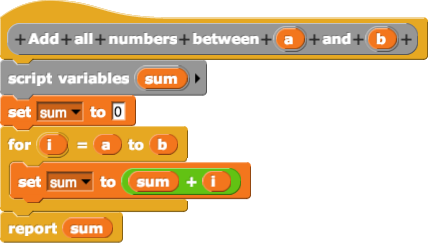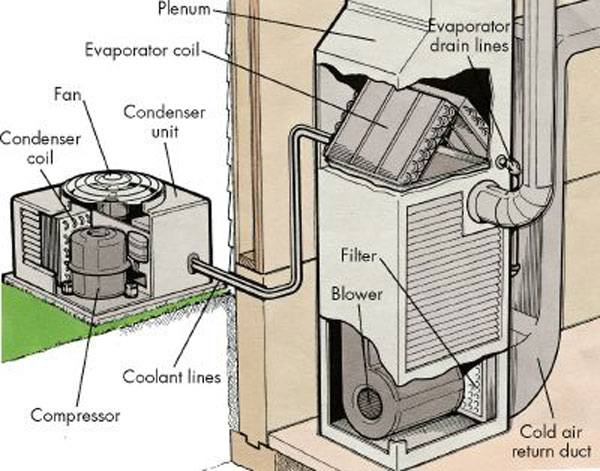|
VisSim
VisSim is a visual block diagram program for the simulation of dynamical systems and model-based design of embedded systems, with its own visual language. It is developed by Visual Solutions of Westford, Massachusetts. Visual Solutions was acquired by Altair in August 2014 and its products have been rebranded as Altair Embed as a part of Altair's Model Based Development Suite. With Embed, virtual prototypes of dynamic systems can be developed. Models are built by sliding blocks into the work area and wiring them together with the mouse. Embed automatically converts the control diagrams into C-code ready to be downloaded to the target hardware. VisSim (now Altair Embed) uses a graphical data flow paradigm to implement dynamic systems, based on differential equations. Version 8 adds interactive UML OMG 2 compliant state chart graphs that are placed in VisSim diagrams, which allows the modelling of state based systems such as startup sequencing of process plants or serial protoco ... [...More Info...] [...Related Items...] OR: [Wikipedia] [Google] [Baidu] [Amazon] |
Visual Programming Language
In computing, a visual programming language (visual programming system, VPL, or, VPS), also known as diagrammatic programming, graphical programming or block coding, is a programming language that lets users create computer program, programs by manipulating program elements rather than by specifying them . A VPL allows programming with visual expressions, spatial arrangements of text and graphic symbols, used either as elements of syntax or secondary notation. For example, many VPLs are based on the idea of "boxes and arrows", where boxes or other screen objects are treated as entities, connected by arrows, lines or arcs which represent relations. VPLs are generally the basis of low-code development platforms. Definition VPLs may be further classified, according to the type and extent of visual expression used, into icon-based languages, form-based languages, and diagram languages. Visual programming environments provide graphical or iconic elements which can be manipulated by u ... [...More Info...] [...Related Items...] OR: [Wikipedia] [Google] [Baidu] [Amazon] |
Control System
A control system manages, commands, directs, or regulates the behavior of other devices or systems using control loops. It can range from a single home heating controller using a thermostat controlling a domestic boiler to large industrial control systems which are used for controlling processes or machines. The control systems are designed via control engineering process. For continuously modulated control, a feedback controller is used to automatically control a process or operation. The control system compares the value or status of the process variable (PV) being controlled with the desired value or setpoint (SP), and applies the difference as a control signal to bring the process variable output of the plant to the same value as the setpoint. For sequential and combinational logic, software logic, such as in a programmable logic controller, is used. Open-loop and closed-loop control Feedback control systems Logic control Logic control systems for indus ... [...More Info...] [...Related Items...] OR: [Wikipedia] [Google] [Baidu] [Amazon] |
Icon Of VisSim V7
An icon () is a religious work of art, most commonly a painting, in the cultures of the Eastern Orthodox, Oriental Orthodox, Catholic Church, Catholic, and Lutheranism, Lutheran churches. The most common subjects include Jesus, Mary, mother of Jesus, Mary, saints, and angels. Although especially associated with portrait-style images concentrating on one or two main figures, the term also covers most of the religious images in a variety of artistic media produced by Eastern Christianity, including narrative scenes, usually from the Bible or the lives of saints. Icons are most commonly painted on wood panels with egg tempera, but they may also be cast in metal or carved in stone or embroidered on cloth or done in mosaic or fresco work or printed on paper or metal, etc. Comparable images from Western Christianity may be classified as "icons", although "iconic" may also be used to describe the static style of a devotional image. In the Greek language, the term for icon painting uses ... [...More Info...] [...Related Items...] OR: [Wikipedia] [Google] [Baidu] [Amazon] |
State Diagram
A state diagram is used in computer science and related fields to describe the behavior of systems. State diagrams require that the system is composed of a finite number of states. Sometimes, this is indeed the case, while at other times this is a reasonable abstraction. Many forms of state diagrams exist, which differ slightly and have different semantics. Overview State diagrams provide an abstract description of a system's behavior. This behavior is analyzed and represented by a series of events that can occur in one or more possible states. Hereby "each diagram usually represents objects of a single class and track the different states of its objects through the system". State diagrams can be used to graphically represent finite-state machines (also called finite automata). This was introduced by Claude Shannon and Warren Weaver in their 1949 book ''The Mathematical Theory of Communication''. Another source is Taylor Booth in his 1967 book ''Sequential Machines and Aut ... [...More Info...] [...Related Items...] OR: [Wikipedia] [Google] [Baidu] [Amazon] |
Machine Code
In computer programming, machine code is computer code consisting of machine language instructions, which are used to control a computer's central processing unit (CPU). For conventional binary computers, machine code is the binaryOn nonbinary machines it is, e.g., a decimal representation. representation of a computer program that is actually read and interpreted by the computer. A program in machine code consists of a sequence of machine instructions (possibly interspersed with data). Each machine code instruction causes the CPU to perform a specific task. Examples of such tasks include: # Load a word from memory to a CPU register # Execute an arithmetic logic unit (ALU) operation on one or more registers or memory locations # Jump or skip to an instruction that is not the next one In general, each architecture family (e.g., x86, ARM) has its own instruction set architecture (ISA), and hence its own specific machine code language. There are exceptions, such as the ... [...More Info...] [...Related Items...] OR: [Wikipedia] [Google] [Baidu] [Amazon] |
Embedded Systems
An embedded system is a specialized computer system—a combination of a computer processor, computer memory, and input/output peripheral devices—that has a dedicated function within a larger mechanical or electronic system. It is embedded as part of a complete device often including electrical or electronic hardware and mechanical parts. Because an embedded system typically controls physical operations of the machine that it is embedded within, it often has real-time computing constraints. Embedded systems control many devices in common use. , it was estimated that ninety-eight percent of all microprocessors manufactured were used in embedded systems. Modern embedded systems are often based on microcontrollers (i.e. microprocessors with integrated memory and peripheral interfaces), but ordinary microprocessors (using external chips for memory and peripheral interface circuits) are also common, especially in more complex systems. In either case, the processor(s) use ... [...More Info...] [...Related Items...] OR: [Wikipedia] [Google] [Baidu] [Amazon] |
ANSI C
ANSI C, ISO C, and Standard C are successive standards for the C programming language published by the American National Standards Institute (ANSI) and ISO/IEC JTC 1/SC 22/WG 14 of the International Organization for Standardization (ISO) and the International Electrotechnical Commission (IEC). Historically, the names referred specifically to the original and best-supported version of the standard (known as C89 or C90). Software developers writing in C are encouraged to conform to the standards, as doing so helps portability between compilers. History and outlook The first standard for C was published by ANSI. Although this document was subsequently adopted by ISO/IEC and subsequent revisions published by ISO/IEC have been adopted by ANSI, "ANSI C" is still used to refer to the standard. While some software developers use the term ISO C, others are standards-body neutral and use Standard C. Informal specification: K&R C (''C78'') Informal specification in 1978 (Brian Kernig ... [...More Info...] [...Related Items...] OR: [Wikipedia] [Google] [Baidu] [Amazon] |
Heating, Ventilation, And Air Conditioning
Heating, ventilation, and air conditioning (HVAC ) is the use of various technologies to control the temperature, humidity, and purity of the air in an enclosed space. Its goal is to provide thermal comfort and acceptable indoor air quality. HVAC system design is a subdiscipline of mechanical engineering, based on the principles of thermodynamics, fluid mechanics, and heat transfer. "Refrigeration" is sometimes added to the field's abbreviation as HVAC&R or HVACR, or "ventilation" is dropped, as in HACR (as in the designation of HACR-rated circuit breakers). HVAC is an important part of residential structures such as single family homes, apartment buildings, hotels, and senior living facilities; medium to large industrial and office buildings such as skyscrapers and hospitals; vehicles such as cars, trains, airplanes, ships and submarines; and in marine environments, where safe and Sick building syndrome, healthy building conditions are regulated with respect to temperature and ... [...More Info...] [...Related Items...] OR: [Wikipedia] [Google] [Baidu] [Amazon] |
Numerical Integration
In analysis, numerical integration comprises a broad family of algorithms for calculating the numerical value of a definite integral. The term numerical quadrature (often abbreviated to quadrature) is more or less a synonym for "numerical integration", especially as applied to one-dimensional integrals. Some authors refer to numerical integration over more than one dimension as cubature; others take "quadrature" to include higher-dimensional integration. The basic problem in numerical integration is to compute an approximate solution to a definite integral :\int_a^b f(x) \, dx to a given degree of accuracy. If is a smooth function integrated over a small number of dimensions, and the domain of integration is bounded, there are many methods for approximating the integral to the desired precision. Numerical integration has roots in the geometrical problem of finding a square with the same area as a given plane figure ('' quadrature'' or ''squaring''), as in the quadrature of t ... [...More Info...] [...Related Items...] OR: [Wikipedia] [Google] [Baidu] [Amazon] |
Transfer Function
In engineering, a transfer function (also known as system function or network function) of a system, sub-system, or component is a function (mathematics), mathematical function that mathematical model, models the system's output for each possible input. It is widely used in electronic engineering tools like Electronic circuit simulation, circuit simulators and control systems. In simple cases, this function can be represented as a two-dimensional graph (function), graph of an independent scalar (mathematics), scalar input versus the dependent scalar output (known as a transfer curve or characteristic curve). Transfer functions for components are used to design and analyze systems assembled from components, particularly using the block diagram technique, in electronics and control theory. Dimensions and units of the transfer function model the output response of the device for a range of possible inputs. The transfer function of a two-port electronic circuit, such as an amplifier, ... [...More Info...] [...Related Items...] OR: [Wikipedia] [Google] [Baidu] [Amazon] |






